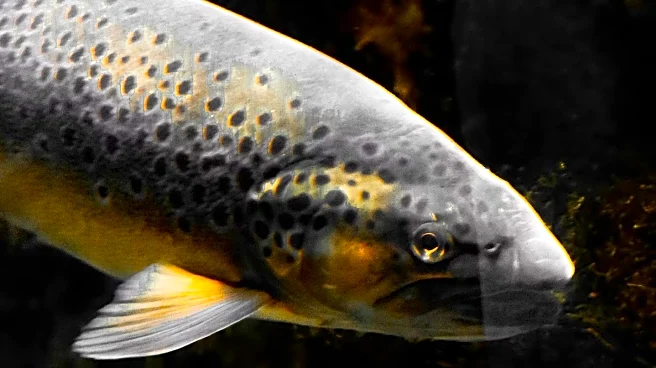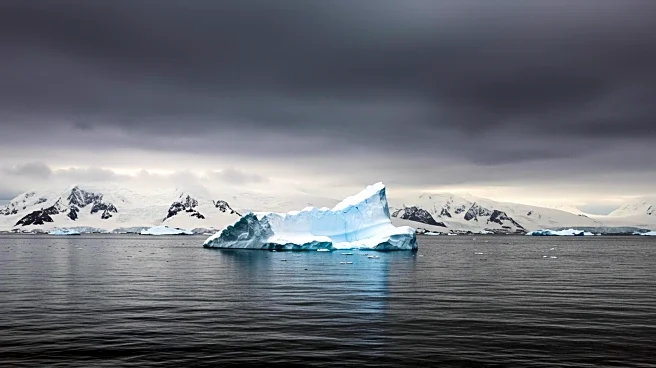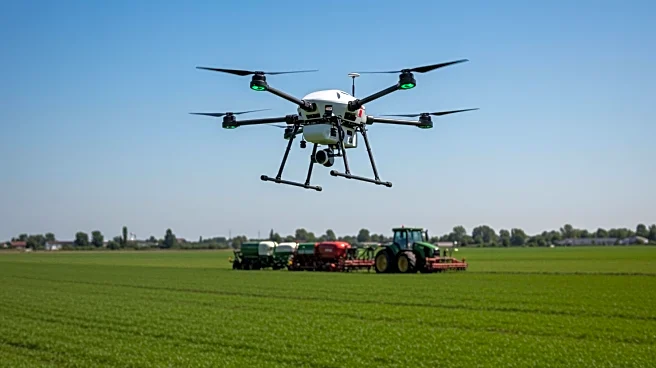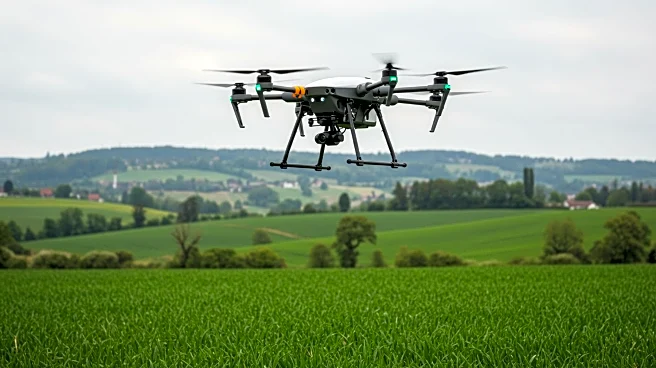What is the story about?
What's Happening?
The debate over the nutritional and environmental benefits of wild-caught versus farm-raised salmon continues to be a topic of interest. Wild-caught salmon, which live in natural environments like oceans and rivers, are often considered superior in terms of nutritional value and environmental impact. They consume a natural diet of smaller fish and marine organisms. In contrast, farm-raised salmon are bred in controlled environments and fed a diet of pellets made from fish oil, fishmeal, and plant proteins. While farmed salmon is higher in fat, it is also rich in omega-3 fatty acids, protein, vitamins, and minerals. However, it may contain higher levels of contaminants like PCBs due to its higher fat content. The use of antibiotics in farmed salmon is also a concern, as it can lead to antibiotic resistance and environmental issues.
Why It's Important?
The choice between wild-caught and farm-raised salmon has significant implications for consumers, the environment, and the fishing industry. Wild-caught salmon is often more expensive, but it is perceived as a healthier option due to its lower fat content and higher levels of vitamin D. Farm-raised salmon, while more affordable, raises concerns about sustainability and health due to potential contaminants and antibiotic use. The decision impacts consumer health, as omega-3 fatty acids in salmon are crucial for heart health. Additionally, the environmental sustainability of salmon farming practices affects marine ecosystems and biodiversity. Consumers and policymakers must weigh these factors when making decisions about seafood consumption and regulation.
What's Next?
As consumers become more aware of the differences between wild-caught and farm-raised salmon, there may be increased demand for transparency in labeling and sourcing. Sustainable farming practices could become more prevalent as consumers seek environmentally responsible options. Regulatory bodies may also impose stricter guidelines on antibiotic use and contaminant levels in farmed salmon. The industry might see a shift towards more sustainable practices, such as those employed by farms like Kvarøy Arctic and Ōra King, which prioritize environmental and welfare standards. This could lead to a broader adoption of certification labels that assure consumers of the sustainability of their seafood choices.
Beyond the Headlines
The discussion around salmon consumption also touches on broader issues of food security and ethical farming practices. As the global population grows, the demand for affordable protein sources like farmed salmon will likely increase. Balancing this demand with environmental sustainability and health concerns presents a complex challenge. The industry may need to innovate in areas such as feed composition and farming techniques to reduce environmental impact while maintaining nutritional quality. Additionally, consumer education on the benefits and drawbacks of different types of salmon can empower individuals to make informed choices that align with their health and environmental values.
AI Generated Content
Do you find this article useful?











